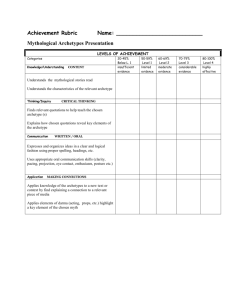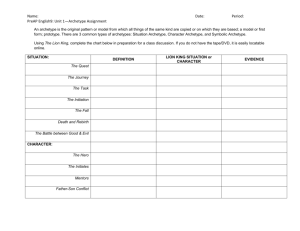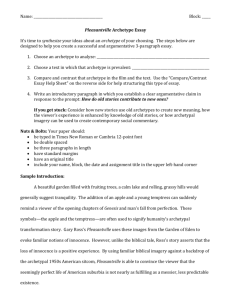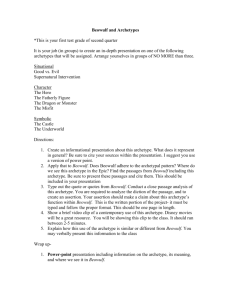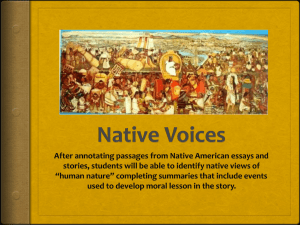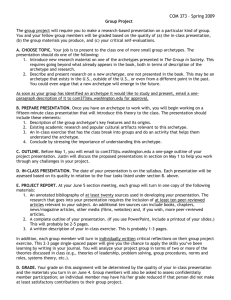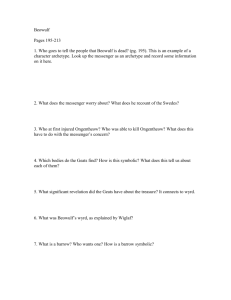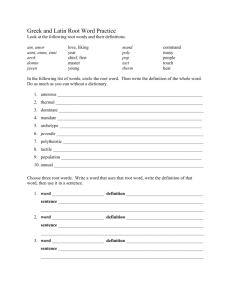Archetypes in Literature: Beowulf Worksheet
advertisement
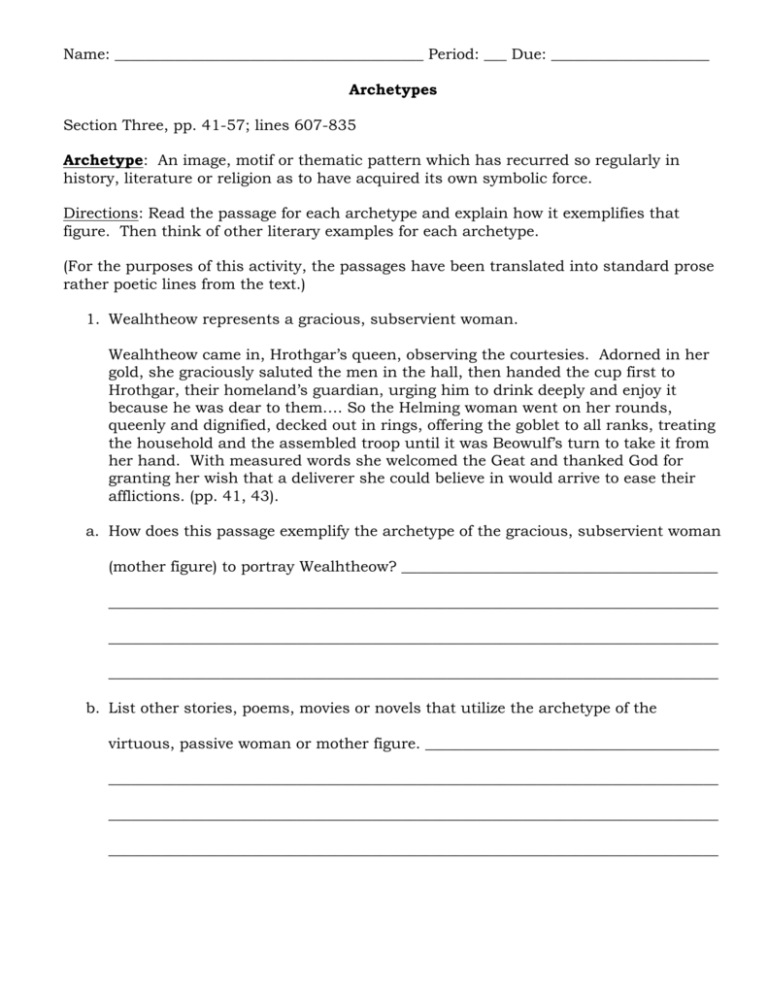
Name: _________________________________________ Period: ___ Due: _____________________ Archetypes Section Three, pp. 41-57; lines 607-835 Archetype: An image, motif or thematic pattern which has recurred so regularly in history, literature or religion as to have acquired its own symbolic force. Directions: Read the passage for each archetype and explain how it exemplifies that figure. Then think of other literary examples for each archetype. (For the purposes of this activity, the passages have been translated into standard prose rather poetic lines from the text.) 1. Wealhtheow represents a gracious, subservient woman. Wealhtheow came in, Hrothgar’s queen, observing the courtesies. Adorned in her gold, she graciously saluted the men in the hall, then handed the cup first to Hrothgar, their homeland’s guardian, urging him to drink deeply and enjoy it because he was dear to them…. So the Helming woman went on her rounds, queenly and dignified, decked out in rings, offering the goblet to all ranks, treating the household and the assembled troop until it was Beowulf’s turn to take it from her hand. With measured words she welcomed the Geat and thanked God for granting her wish that a deliverer she could believe in would arrive to ease their afflictions. (pp. 41, 43). a. How does this passage exemplify the archetype of the gracious, subservient woman (mother figure) to portray Wealhtheow? __________________________________________ _________________________________________________________________________________ _________________________________________________________________________________ _________________________________________________________________________________ b. List other stories, poems, movies or novels that utilize the archetype of the virtuous, passive woman or mother figure. _______________________________________ _________________________________________________________________________________ _________________________________________________________________________________ _________________________________________________________________________________ 2. Beowulf repeatedly evokes the archetype of a hero who displays fair and good qualities. And before he bedded down, Beowulf, that prince of goodness, proudly asserted: “When it comes to fighting, I count myself as dangerous as any day as Grendel. So it won’t be a cutting edge I’ll wield to mow him down, easily as I might. He has no ideas of the arts of war, of shield or sword-play, although he does possess a wild strength. No weapons, therefore, for either this night: unarmed he shall face me if face me he dares.” (pp. 45, 47) a. How does this passage exemplify the qualities of goodness and right for a hero archetype to portray Beowulf? ___________________________________________________ _________________________________________________________________________________ _________________________________________________________________________________ b. List other stories, poems, movies or novels that utilize the archetype of the hero showing the qualities of goodness and right. _____________________________________ _________________________________________________________________________________ _________________________________________________________________________________ 3. Grendel represents the archetypal evil character who enjoys bloodshed without remorse. In off the moors, down through the mist bands God-cursed Grendel came greedily loping. The bane of the race of men roamed forth, hunting for a prey in the high hall…. Then his rage boiled over, he ripped open the mouth of the building, maddening for blood, pacing the length of the patterned floor with his loathsome tread, while a baleful light, flame more than light, flared from his eyes. (p. 49) c. How does this passage exemplify Grendel as an archetypal evil character? ________________________________________________________________________________ _________________________________________________________________________________ _________________________________________________________________________________ d. List other stories, poems, movies or novels that utilize the archetype of the evil character that kills without conscience or remorse. ______________________________ _________________________________________________________________________________ _________________________________________________________________________________
